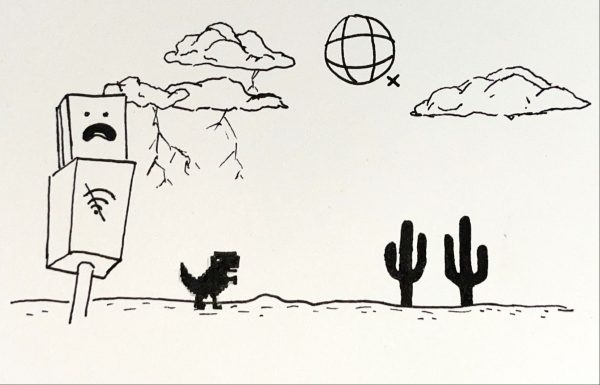Bush’s easy way out to destroy refuge
March 23, 2005
Last week’s Senate vote to open the Arctic National Wildlife Refuge to oil drilling wasn’t just a setback for environmentalists; it’s a defeat for every American who wants a real solution to our impending energy crisis.
Judging from what economists are saying – as well as the ever-increasing prices at the pump – the era of cheap oil is over. A recent Chicago Tribune article noted that energy costs have risen 30 percent this year, and we’re barely three months in.
What we need right now is national leadership on this issue. Instead, we’re getting more of the same drill-now, conserve-later mindset that got us into our current quagmire. Instead of investing more money to develop replacement fossil fuels for the day when oil runs out, the president’s new budget calls for a $50 million cut in alternative energy funding. Meanwhile, drilling in the Arctic National Wildlife Refuge has been presented as some sort of silver bullet for our oil shortage problems.
There’s a vigorous debate about how much oil the refuge contains and whether drilling there would damage the environment. On one hand are pro-drilling advocates who suggest that tapping the oil there will lead America to energy independence; on the other side are environmentalists who claim that the area contains only a few months’ supply.
Here are the few facts that are not in dispute, courtesy of the U.S. Geological Survey’s 1998 report on the refuge. The area contains somewhere between 4- to 12-billion technically recoverable barrels of oil. That’s a pretty big range, and that’s because oil exploration is partly a guessing game of trial and error. That’s why the pro-drilling crowd’s insistence that the environment wouldn’t be spoiled by drilling is bunk; they won’t know how much they’ll have to mess the place up until they start sinking wells.
But those numbers aren’t just a range – they come with probability estimates. There’s a 95-percent chance that there’s only 4-billion barrels and just a 5-percent chance that there’s 12 billion. The Chicago Tribune puts the figure at a generous 8-billion barrels, which it says is only a few months’ worth of oil at current rates of consumption. On top of that, even if we started drilling today, the first drops wouldn’t reach the market for five to 10 years.
The wildlife refuge itself is also a paragon of biodiversity; the Bush administration’s own EPA reports say so. It’s one of the last wild places on earth, and its beauty should be preserved for future generations to enjoy. Drilling there is like throwing a rock through a Rembrandt.
A few years ago, President Bush was often seen in public with a copy of “Theodore Rex,” the biography of Teddy Roosevelt. Presumably, he read about Roosevelt’s legacy as a conservationist; if only he would emulate it. The president needs to encourage investment in alternative energy and act as a responsible steward of the environment. As Roosevelt said, “The conservation of natural resources is the fundamental problem. Unless we solve that problem it will avail us little to solve all others.”
Columns reflect the opinion of the author and not necessarily that of the Northern Star staff.












